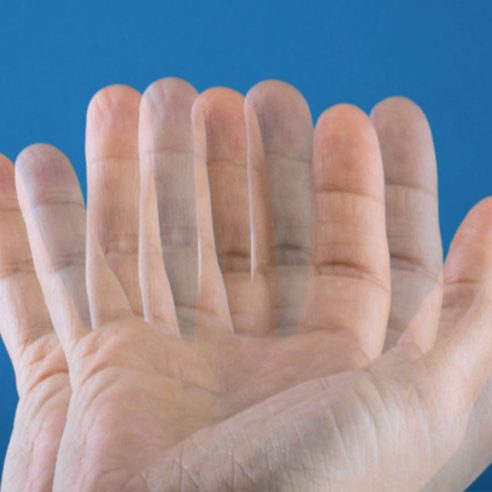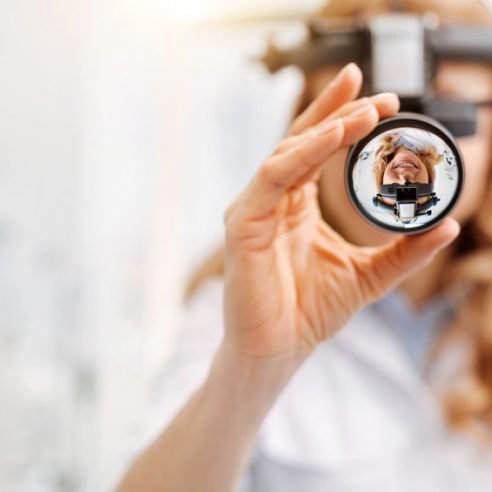Pinguecula (Yellow spot on eye)
If you notice a yellow spot on the white of your eye, you are most likely dealing with pinguecula. The ophthalmological disorder is not severe, but the symptoms can be uncomfortable. Find out how to treat pinguecula and, more importantly, how you can prevent it.
What is pinguecula?
“Pinguecula” comes from the Latin “pinguis” meaning “fat”. It is actually a deposit of fat and calcium that occurs in the conjunctiva and damages the collagen fibers in the eye. Thus, patients who experience pinguecula have one (or more) yellowish growths in their eyes.
Other features of the disease:
- Pinguecula usually appears in the inner corner of the eye;
- It can affect one or both eyes;
- There may be one or more spots;
- It can occur at any age, but is more common in the elderly (because collagen fibers degrade with age);
- The growth is benign, so it does not cause cancer.
Pinguecula vs. pterygium
Do not confuse the pinguecula with the pterygium. Although both are ophthalmological disorders of the conjunctiva, the level of severity differs.
- The pinguecula appears as a yellow spot, while the pterygium has a triangular shape, growing from the nose towards the pupil.
- The pinguecula keeps its appearance over time, while the pterygium grows, covering the cornea.
- Pinguecula does not affect the quality of vision, whereas pterygium can lead to astigmatism and distort the refractive power of the eye.
*In very rare cases, pinguecula can develop into a pterygium, so ophthalmological examination is mandatory for diagnosis and treatment.
Pinguecula: Causes
There are several causes of pinguecula, but the main one is a lack of collagen in the eyes. This can be explained by:
- Ageing – pinguecula is more common in people over 60;
- Exposure in an environment with wind, dust, dirt or pollutants;
- Exposure to UV rays for too long;
At the same time, pinguecula can occur as a result of:
- Some hormonal disorders;
- A high percentage of body fat;
- Certain treatments;
- Dry eyes.
Pinguecula: Symptoms
The most common signs seen in patients experiencing pinguecula are:
- Yellow spot on the eye – one or more;
- Inflammation;
- Irritation;
- Itching;
- Redness of the eyeball, especially near the iris, pupil and cornea;
- Sensation of foreign object in the eye;
- Dry eyes.
Pinguecula: Treatment
During the examination, the doctor performs several ophthalmological investigations to determine the causes and related treatment. The diagnosis for pinguecula can be determined by physical examination using a slit lamp, also known as a biomicroscope.
As a rule, this disorder does not require treatment unless it causes severe discomfort. In such cases, your doctor may prescribe:
- eye drops or ointments to relieve irritation and redness;
- artificial tears or ointments to increase eye lubrication in case of dryness or irritation;
- corticosteroid drops – in more severe situations, the same, to control inflammation.
Pinguecula: Surgery
Ophthalmic surgery may be an option when, even after local treatments, the pinguecula increases in size, becomes prominent and painful, or causes discomfort when wearing contact lenses. The surgery is extremely simple, performed on an outpatient basis, and recovery is rapid.
Some patients also opt for surgery for aesthetic reasons. However, Dr. Holhoș Ophthalmology Network does not recommend pinguecula surgery as long as quality of vision or quality of life is not affected.
How to prevent pinguecula?
An effective prevention against pinguecula is to protect the eyes against ultraviolet rays. This can be achieved by using quality sunglasses with UVA and UVB protection, as well as safety glasses in dusty or windy environments.
In addition, annual ophthalmological examination can help prevent, detect and treat pinguecula early. Dr. Holhoș clinics are waiting for you in Cluj-Napoca, Alba Iulia, Turda, Mediaș and Sibiu, with the best specialists and state-of-the-art ophthalmological technology. All this, so that you can have the best care in maximum comfort.
Text medically reviewed by Dr. Teodor Holhoș, Ophthalmic Surgeon
Written by
Dr. Holhos Team Diseases
Nystagmus is the eye condition where the eyes make repetitive and uncontrollable movements. Discover other symptoms and treatment options.
Color vision deficiency, also known as dyschromatopsia, is a general term referring to various vision disorders characterized by a deficiency in color perception.
“Flying flies” are most often harmless and represent a normal stage in the aging process. Find out what the causes are and how you can reduce the symptoms.
Ocular allergies occur as a reaction of the body to an allergen, causing inflammation and itching in the eyes. The most common ocular allergies are seasonal.
Ophthalmic migraine is most common in the 40s. It manifests itself in visual impairment and even temporary blindness.
Keratitis, also known as “corneal ulcer”, is an inflammation of the cornea. If detected early, the ophthalmological disorder is easy to treat and heals quickly.
Diplopia is an ophthalmological disease in which you see two images of the same thing. The condition can affect anyone, but is more common after the age of 60.
Xanthelasma is a member of the xanthomas family and represents fatty deposits in the skin cells around the eyes. It is visible as yellow, harmless bumps.
Colorblind people perceive colors differently from most people. Most of the time, this ophthalmological disorder makes it difficult to distinguish between certain colors.
Epiphora is an ophthalmological disorder manifested by excessive tearing of the eyes. Most of the time, it is not severe and disappears on its own. However, if you are experiencing this and the problem persists, we recommend that you make an appointment for an ophthalmological examination. Treatment can be different, depending on the cause of the epiphora.
If you notice a yellow spot on the white of your eye, you are most likely dealing with pinguecula. The ophthalmological disorder is not severe, but the symptoms can be uncomfortable. Find out how to treat pinguecula and, more importantly, how you can prevent it.
Entropion is the ophthalmological disorder in which the eyelid of the eye turns inwards. It is different from ectropion, where the eyelid turns outwards. It most often occurs in older people and usually only affects the lower eyelid.
It is possible that you may also be experiencing ocular toxoplasmosis without knowing it. This retinal disorder is extremely common in our century and is manifested by eye discomfort and blurred vision.
Ectropion is the ophthalmic disorder in which the eyelid and eyelashes pull away from the cornea, and reorient outwards.
One of the most common types of headache is headache of ocular origin. It occurs as a result of an ophthalmological disorder.
Blepharitis is an ophthalmological disorder that manifests itself by inflammation of the eyelids. At the base of the eyelids, the patient notices small crusts formed by solidified oil particles or bacteria that collect in the crease at the corner of the eye.
Uveitis is an ophthalmological disorder of the uveal tract, manifested by changes in vision and eye pain.
Among the most common ophthalmological disorders is hordeolum. This is popularly known as an “stye” and is an infection of the eyelids.
The drooping eyelid is known in medical terms as “palpebral ptosis”. It manifests itself by narrowing the visual slit of one or both eyes, creating aesthetic and functional discomfort.
Amblyopia is a vision problem, popularly known as “lazy eye”. This disorder can occur in one or both eyes, and studies show that around 3% of the population suffer from this eye disease.
The sensation of “dry eyes” or “tired eyes” is known in medical terms as “dry keratoconjunctivitis” or “xerophthalmia”, and refers to a dysfunction of the tear film.
Strabismus, also known as “crossed-eyes” or “crossed vision”, is an ophthalmological disorder in which the visual axis of the eyes is not aligned. This causes one eye to deviate when it needs to look at a fixed point.
Conjunctivitis is one of the most common ophthalmological disorders. It can occur in adults, children and babies.
Chalazion is manifested by inflammation of the upper or lower eyelid. It is one of the most common ophthalmological disorders, and occurs when the secretion of sebaceous glands in the eye is blocked.
Macular degeneration involves deterioration of the macula and therefore of the quality of central vision. This disease does not affect peripheral vision and therefore cannot lead to complete blindness.
Hypermetropia affects the ability to see nearby objects. You may be able to see distant objects clearly, but closer objects, even words in a book, are usually out of focus. Hypermetropia occurs when the eye does not focus light properly on the retina (the light-sensitive layer at the back of the eye).
Myopia is a disorder that falls into the category of refractive errors (along with astigmatism and hypermetropia). In common terms, myopia manifests itself as blurred distance vision, while near vision is not a problem.
Astigmatism, like myopia and hypermetropia, is a refractive error. In general terms, the disorder manifests itself in blurred, fuzzy vision, regardless of the distance to objects, surfaces.
Presbyopia is an age-related disorder characterized by decreased near vision. It usually appears around the age of 40.
Cataract is a common ophthalmological disorder that causes progressive loss of vision through loss of lens transparency. Studies show that about 50% of the population loses their vision due to this disorder.































